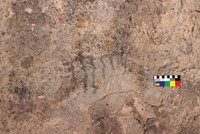Advertisement
Grab your lab coat. Let's get started
Welcome!
Welcome!
Create an account below to get 6 C&EN articles per month, receive newsletters and more - all free.
It seems this is your first time logging in online. Please enter the following information to continue.
As an ACS member you automatically get access to this site. All we need is few more details to create your reading experience.
Not you? Sign in with a different account.
Not you? Sign in with a different account.
ERROR 1
ERROR 1
ERROR 2
ERROR 2
ERROR 2
ERROR 2
ERROR 2
Password and Confirm password must match.
If you have an ACS member number, please enter it here so we can link this account to your membership. (optional)
ERROR 2
ACS values your privacy. By submitting your information, you are gaining access to C&EN and subscribing to our weekly newsletter. We use the information you provide to make your reading experience better, and we will never sell your data to third party members.
Art & Artifacts
Newscripts
Statues of women, ancient and modern
by Alex Scott
March 28, 2022
| A version of this story appeared in
Volume 100, Issue 11
Solving an ancient mystery

Venus of Willendorf—an 11.1 cm tall stone figure carved 30,000 years ago from oolitic limestone by Europe’s first people, the Gravettians—is one of the world’s most important cultural artifacts. Extraordinarily well preserved, the figure of a female with exaggerated genitalia, pronounced haunches, heavy breasts, and a sophisticated headdress or hairdo, is one of the earliest signs of modern human symbolic behavior.
Where Venus originally came from, though, has been a mystery since 1908 when the figurine was plucked from the left bank of the Danube River, near Willendorf, Austria. Venus’s historical importance meant that using an invasive procedure to investigate the origin of the Venus figure was too risky.
A team of scientists from research institutes in Austria and Germany recently looked inside Venus for the first time noninvasively, thanks to a novel analytical technique based on microcomputed tomography scanning and resolution. The team used the approach to examine the figure in microscopic 3D detail. The scientists were able to see features and flaws within the rock, even visualizing ancient mollusk shells trapped inside. They were also able to use the tomography technique to accurately characterize smaller features such as the size of the mineral grains that make up the material.
“In this case, the stone—oolite—is quite heterogenous internally and bears a signature like a fingerprint,” says Gerhard W. Weber, a professor of evolutionary anthropology at the University of Vienna and a member of the research team.
The researchers searched Europe for a location that had the same oolitic limestone. “We found a strikingly close match for grain size and distribution near Lake Garda in the southern Alps, Italy,” the researchers write in Scientific Reports (2022, DOI: 10.1038/s41598-022-06799-z).
The spot was a big surprise for the researchers because Willendorf, where Venus was discovered, is approximately 930 km from Lake Garda. This might mean that Gravettian people moved around quite a bit, transporting artifacts as they moved before the last ice age 21,500 years ago, the researchers note.
Celebrating women at scale
While the artist who carved the Venus of Willendorf created a statuette of a woman that could sit in the palm of a Gravettian hand, the Smithsonian Institution has gone big in a recent exhibit, showing off the largest-ever collection of life-size statues of women.

For its project, named #IfThenSheCan–The Exhibit, the Smithsonian assembled 120 bright orange, 3D-printed statues. All the women represented have excelled in the fields of science, technology, engineering, and mathematics (STEM). The display is part of the Smithsonian’s celebration of Women’s History Month in March. The full exhibit of statues debuted at NorthPark Center in Dallas in 2021.
The American Association for the Advancement of Science and Lyda Hill Philanthropies picked the women featured in the statues. The subjects include Jessica Esquivel, one of only 150 black women in the US with a doctorate in physics, and Karina Popovich, a college student who produced over 82,000 pieces of 3D-printed protective clothing for health workers in the early days of the pandemic. Each statue features a unique QR code so that visitors can learn about each of the women’s achievements.
“These striking 3D-printed figures of remarkable women in STEM careers help us celebrate the incredible impact women continue to make on vital scientific endeavors,” secretary of the Smithsonian, Lonnie Bunch, says in a press release. “This exhibition highlights how a more diverse, more inclusive workforce will strengthen our shared future.” Visit the exhibit virtually at ifthenexhibit.org/virtual_tour/.
Please send comments and suggestions to newscripts@acs.org.





Join the conversation
Contact the reporter
Submit a Letter to the Editor for publication
Engage with us on Twitter